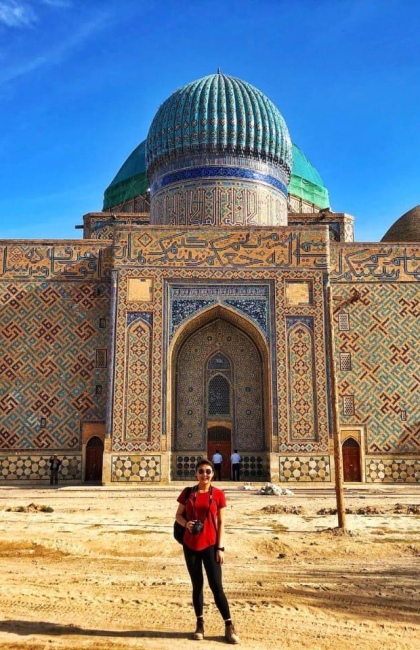Ancient City of Sighnaq
Sighnaq (also spelled as Sygnak), an ancient city located in the southern part of Kazakhstan, now lies in ruins. It was first documented by Arab geographers in the 10th century. However, there is evidence suggesting its existence as early as the 8th century. The flourishing city owed much of its prosperity to the influence of the Silk Road, experiencing economic and cultural growth that extended beyond its regional boundaries.
Sighnaq attracted numerous attempts at conquest. The Karakhanids sought to capture the city and establish Islam, but it was the Khorezmians who succeeded around the 12th century. Beyond trade, Sighnaq thrived through diverse activities such as crafts, agriculture, fishing, and hunting. Renowned figures from the settlement include Korkyt Ata (legendary storyteller and creator of the kobyz), Khusama ad-Din al-Syganaki (Islamic theologian), and Hafiz Khorezmi (poet).
Facing the onslaught of Jochi Khan's troops, Sighnaq surrendered a week into the siege. Descendants of Genghis Khan played pivotal roles in the city's development. They made the city the capital of the Blue Horde (one of the uluses within the Mongol Empire), constructed a mint, mosques, madrassas, and other public structures. Sighnaq's strategic location at the crossroads of significant trade routes further enhanced its importance. However, by the late 18th to mid-19th centuries, the city entered a period of decline due to the Kazakh-Dzungar war and the waning significance of the Silk Road.

Excavations began in 1948, revealing the remnants of an ancient mosque, mausoleums, millstones, and more. Among the discoveries were ancient coins, armor, ceramics, and jewelry. These artifacts can be seen in the Kyzylorda Regional Museum of Local History. Researchers confirmed the city's advanced infrastructure, including water supply, sewerage, and a concealed underground passage leading out of the city.
How to get there?
The journey from Kyzylorda to Sighnaq spans approximately 2 hours along the E38 (M32) highway. Just before reaching the village of Sunakata, approximately 2 km (1.2 mi) prior, make a left turn. This marks the transition from the asphalted highway to a steppe road.
Other tourist attractions near Sighnaq:
- Museum of the History of Rice Farming Industry
- Mausoleum of Sunak Ata
- Syrdarya River


_420x650_4ab.jpg)
_420x650_4ab.jpg)
